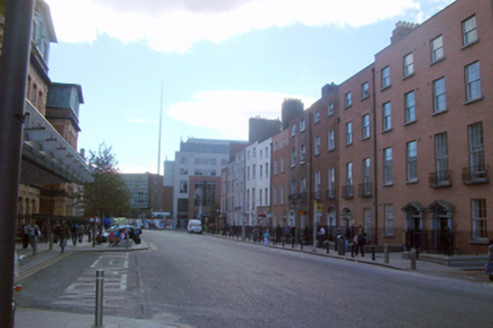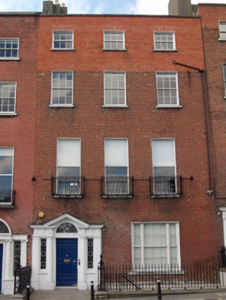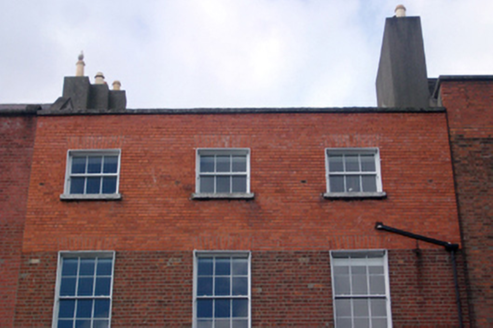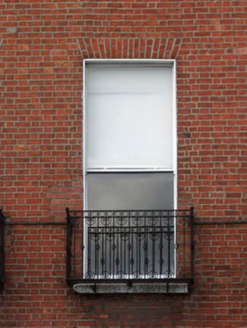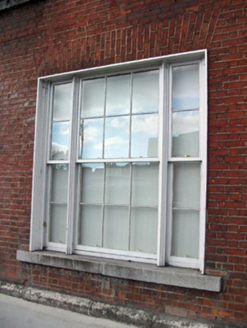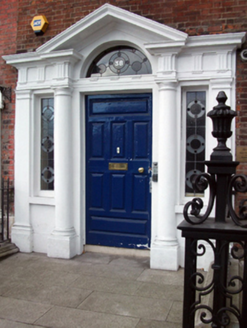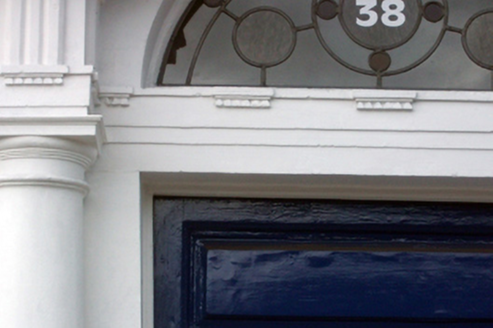Survey Data
Reg No
50010641
Rating
Regional
Categories of Special Interest
Architectural, Artistic
Original Use
House
In Use As
Office
Date
1760 - 1770
Coordinates
315580, 235018
Date Recorded
29/09/2011
Date Updated
--/--/--
Description
Terraced four-storey house over exposed basement, built c.1765, having two-bay ground floor and three-bay upper floors. Now in use as theatre. Pitched slate roof with clay ridge tiles behind rebuilt red brick parapet wall with squared granite coping. Rendered chimneystack with clay pots to party walls. Replacement uPVC rainwater goods throughout. Flemish bond red brick walls with granite plinth course over rendered walls to basement. Top floor rebuilt in English garden wall bond. Gauged red brick flat-arched window openings with rendered reveals and granite sills. Replacement one-over-one pane timber sliding sash windows to first floor, six-over-six pane to basement, three-over-three to top floor, with historic replacement six-over-six pane to second floor, and tripartite window to ground floor having six-over-six pane opening flanked by two-over-two pane sidelights. Cast-iron balconettes to first floor. Square-headed door opening within painted stone Tuscan doorcase having engaged columns with responding pilasters to sidelights on rusticated plinths, with entablature and cornice surmounted by replacement stained-glass fanlight within moulded archivolt. Replacement timber door and replacement stained-glass sidelights. Door opens onto granite flagged platform bridging basement area, enclosed by wrought-iron railings with boxed corner posts on original and replacement granite plinth. Matching gate accessing limestone flagged basement via recent galvanized steel staircase.
Appraisal
Located within an extensive historic terrace, this fine former townhouse forms an integral component of the streetscape. Built during the late eighteenth century, by John Ensor, the structure maintains a shared typology consistent with the early aspect of the square. The pleasantly appointed facade is greatly enlivened by a tripartite doorcase that augments the presence of this building, which is also reported to retain a spacious entrance hall with a pendant cornice and modillion cornice. The varied timber sash windows enhance the character of the facade and the foreground is appropriate, with stone plinth to the basement area, and iron railings, with a flagged are to the entrance. Parnell Square itself was the creation of Dr Bartholomew Mosse. In 1748 he leased four acres at the junction of three important sites: the Gardiner Estate, Sackville (now O’Connell) Street and Great Britain (now Parnell) Street. There the New Gardens (now the Garden of Remembrance) were constructed, a landscaped tract of land with illuminated paths, obelisks and a loggia. Entrance fees to the gardens funded the construction of the Rotunda Hospital to the south, Mosse’s life ambition, and the success of the gardens precipitated the development of the surrounding square, largely by the hospital's chief builders.
